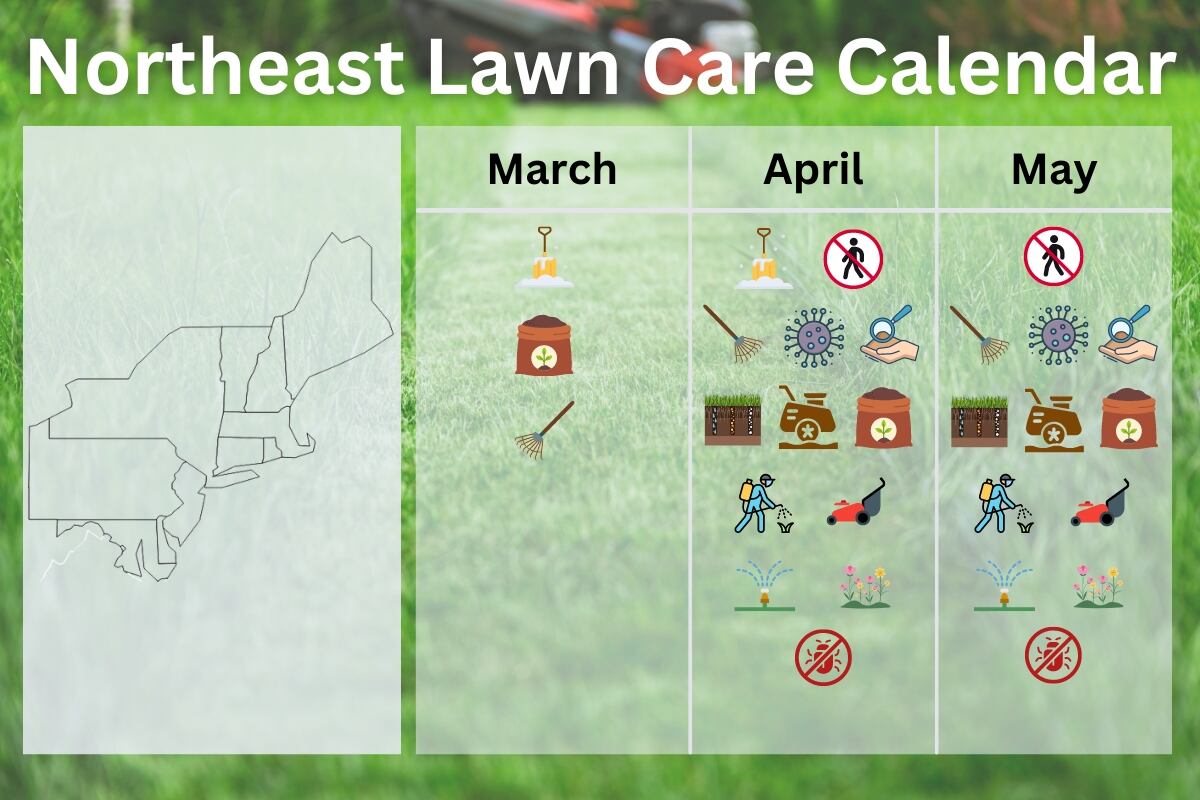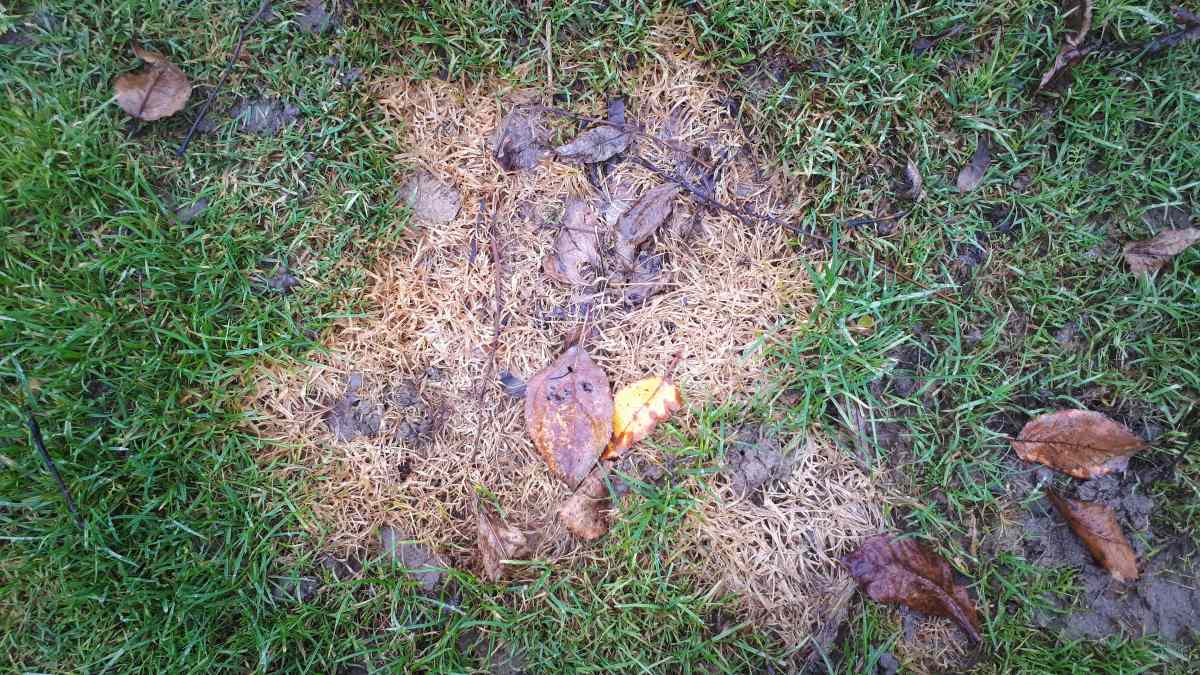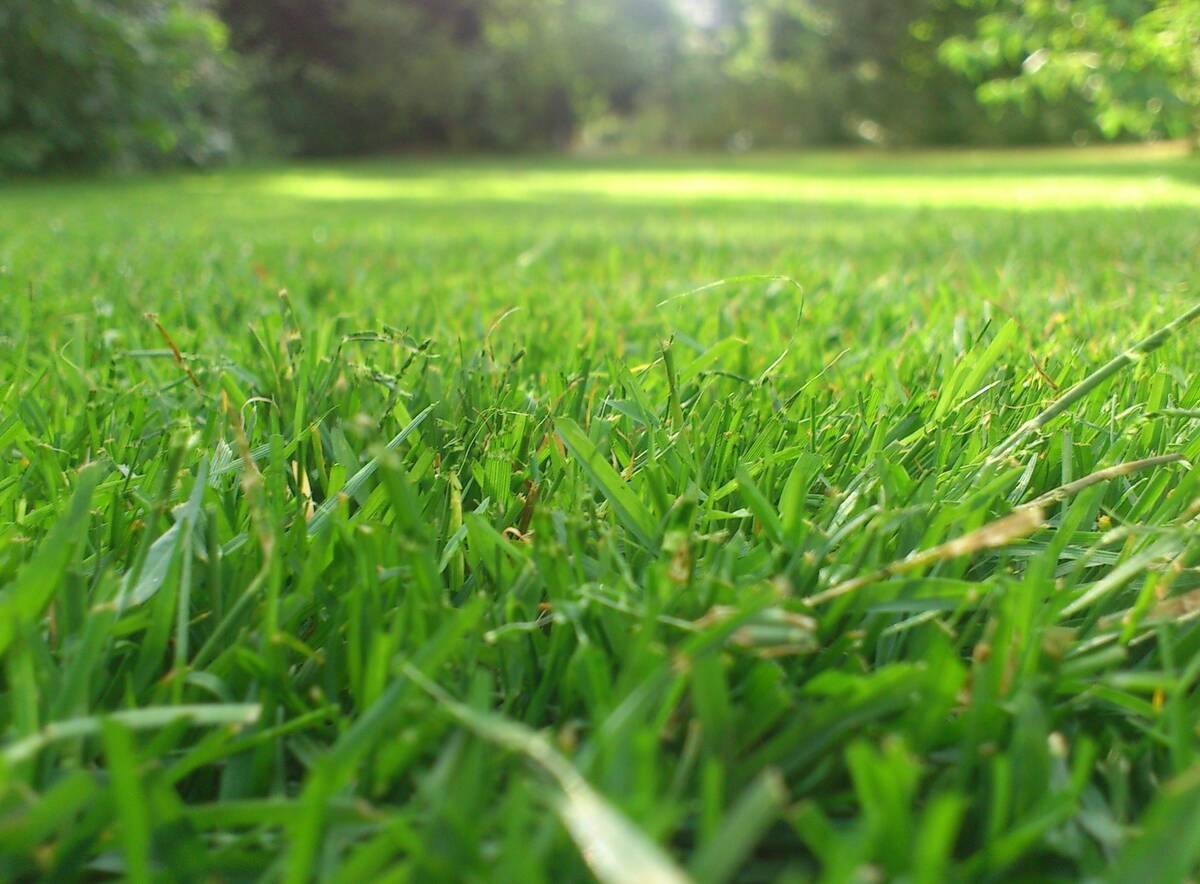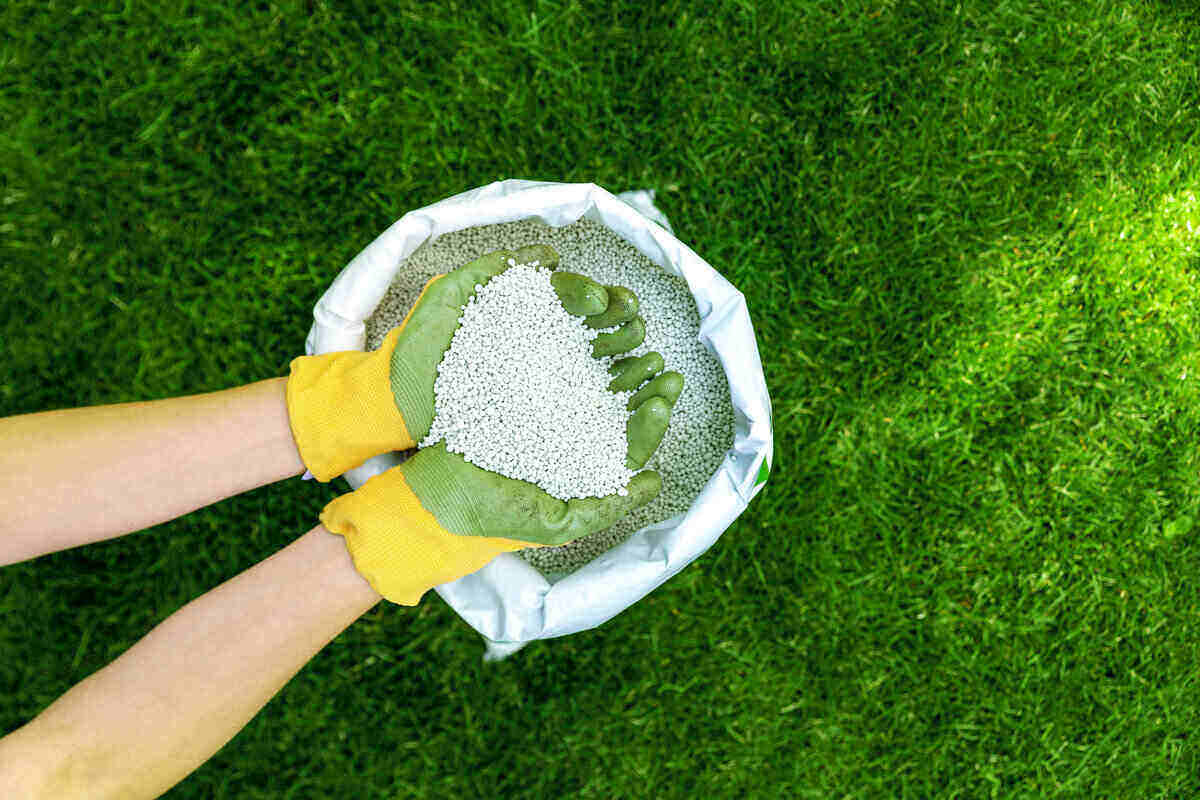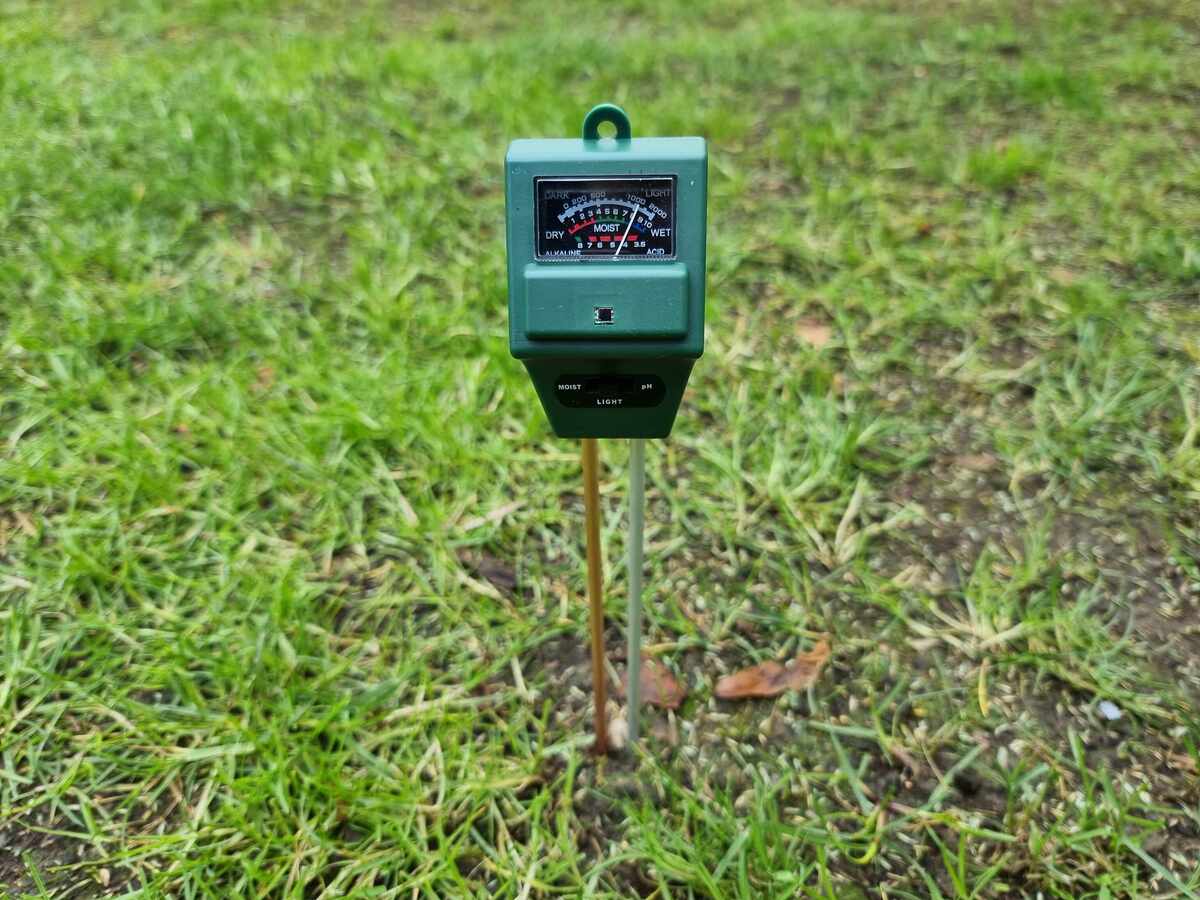
Knowing how to test your soil moisture level might sound like something scientists in white lab coats do, but it’s rather simple with moisture meters or the look-and-feel method.
Achieving perfect moisture levels in your soil is the secret to a beautiful, dense-growing lawn. With the look-and-feel method or a simple moisture meter, you can ensure your grass gets the hydration it needs.
Look and Feel Method
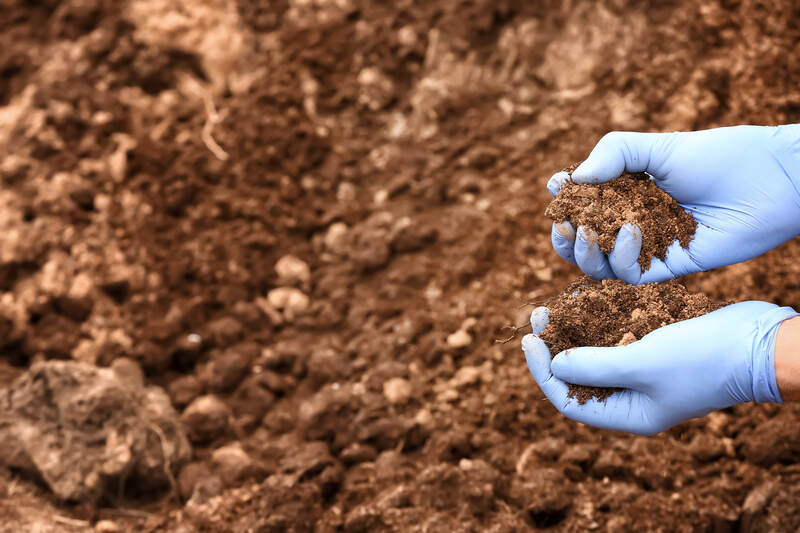
Ready to get your hands dirty and figure out the signs that your lawn needs watering or is sipping enough to stay healthy? The look-and-feel method is a tried-and-true approach that involves nothing more than a spade, a bit of digging, and your sense of touch.
Here’s how you do it:
- Grab your tools: Use a soil spade or a shovel. This isn’t just about poking around the surface; you need to dig down into the root zone.
- Dig in: Head to various spots in your yard and dig down to the root zone, usually about 6 to 8 inches deep. You want a good mix of samples to get an accurate reading.
- Sample the soil: Take the soil in your hands and squeeze it.
- Assess the moisture: Using the chart below, determine the moisture level of your soil. Is it dry and crumbly? Wet and sticky? Somewhere in between? Each texture gives you clues about how thirsty your soil really is.
| Moisture Levels | Sandy Soils | Clay Soils |
Dry | The soil sample is powdery and dry. It could be slightly crusted but breaks down into powder. | When you squeeze the soil sample, you can form a ball. There is no free, but a wet outline of the ball is left on your hand. |
Ideal | The soil sample feels dry, loose, and single-grained. It flows through the fingers. | When you squeeze the soil sample, you can form a ball. There is no free but a wet outline of the ball is left on your hand. |
Too Wet | When you squeeze the soil sample, it drips water. | When you squeeze the soil sample, it drips water. In heavy clay soils, puddles can be seen on the surface. |
Check this video for more information:
Soil Moisture Meter
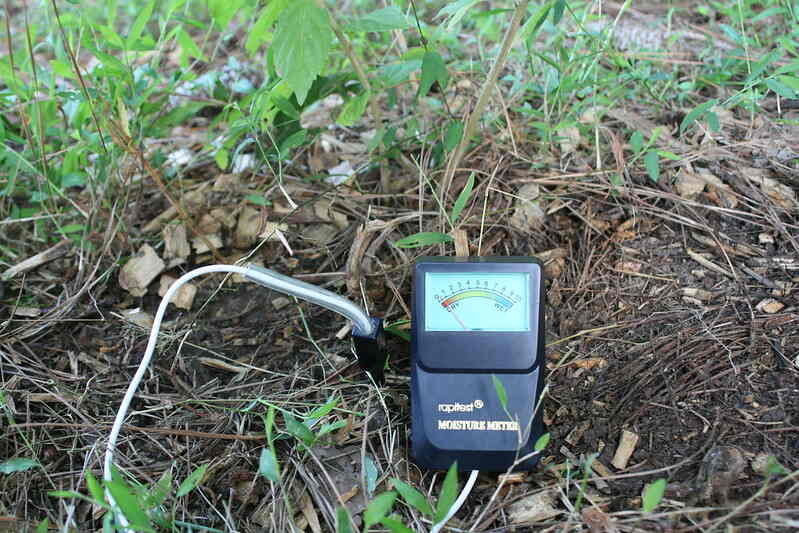
If digging in the dirt and squeezing soil doesn’t quite fit into your idea of a fun afternoon, say hello to soil moisture meters. These gadgets take the guesswork out of soil moisture testing, and they do it fast.
Here’s how to use them:
- Get your gadget: Buy a soil moisture probe or meter. These come in various shapes and sizes, but all of them give you a quick and easy read on your soil’s moisture level.
- Stick it in: Insert the meter or probe into the soil. You should insert it half the gadget or 6 to 8 inches deep.
- Read the results: If you’re using a digital probe, you’ll get a reading in just a few seconds. For traditional scale probes, watch the arrow move and stop at a specific number on the scale indicator. The number you are looking for here is around 5.
- Cover more ground: To get an accurate picture of your yard’s overall moisture, you’ll need to check multiple spots. Wander around and stick the probe in various areas.
FAQs About Soil Moisture
Can I leave my moisture meter in the soil?
After using your moisture meter, make sure to remove it from the soil and clean it with a dry, clean cloth. Leaving the meter in the soil when not in use can damage the sensitive probe, reducing its effectiveness over time.
What factors can affect soil moisture levels in my lawn?
Soil moisture in your lawn is affected by:
- Precipitation
- Soil temperature
- Soil type
- Evaporation
- Irrigation
- Runoff
Is too much soil moisture bad for my lawn?
Yes, if soil moisture is consistently too high, it can damage your lawn by drowning the roots. Excess water can also lead to root rot and fungal growth, and cause nutrient deficiencies, weakening the lawn and making it more prone to weeds, pests, and diseases.
When to Hire a Professional
Knowing your soil’s moisture levels is important to maintain a greener and healthier lawn. By using the methods in this article, you ensure your plants are getting the right amount of water.
If maintaining and mowing that growing lawn feels like too much work, contact a lawn care pro. They’ll keep your lawn looking its best, leaving you more time to enjoy your yard.
u003cstrongu003eSources:u003c/strongu003e
Main Photo Credit: Smart Home Perfected / Flickr / CC BY 2.0
